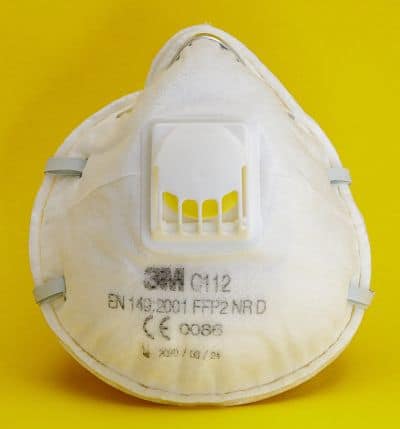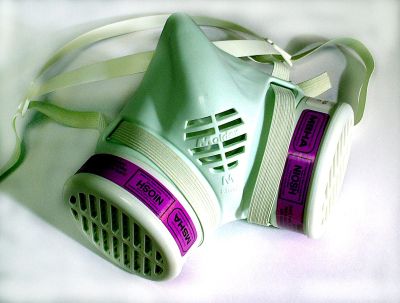In Brief: What Type Of Respirator For Welding Fumes?
There are 4 types of respirators for welding fumes. Disposable half facepiece respirators are the simplest and cheapest. Elastomeric half facepiece respirators offer the same protection but with replaceable filters. Powered-air respirators offer better protection at a higher cost. Supplied-air respirators cost the most and offer the best protection. Use N95 filters in all respirators, at minimum.
The type of respirator you need for welding fumes depends on a variety of factors.
There are several different types, all suitable for different circumstances.
This guide will take you through the different types of respirators and their applications.
1. Disposable Half Facepiece

Source: Wikipedia
Disposable half facepiece respirators are the most basic type.
They are a lightweight option that can fit under any welding helmet. They are disposable so require no maintenance.
They cost very little, but you will have to continually purchase them as they cannot be reused once spent.
2. Elastomeric Half Facepiece

Source: Wikipedia
Elastomeric half facepieces offer the same basic level of protection as their disposable counterparts but have replaceable filters so need not be replaced nearly as often.
They cost more but retain the benefits of the disposable version aside from requiring a small amount of maintenance.
3. Powered-Air Respirator
A powered air respirator actively filters air by pumping it through the filters, then into the helmet for you to breathe.
The filter cartridges must be tailored to the application.
These provide a higher level of protection and an added layer of comfort. People with facial hair will be far better off with this style of respirator.
If you work for long periods with a respirator, you will be better served by this style of respirator over the half facepiece style.
4. Supplied-Air Respirator
Supplied air respirators provide an external source of air for you to breathe. These provide the highest level of protection and work without filters in the presence of any contaminant.
The main downside is that you must be attached to an external air source via a hose. This limits mobility and requires more equipment, which means higher overheads.
They are also the most expensive type of respirator, though you will cut down on the running costs associated with filter cartridges.
What Type Of Respirator Filter For Welding Fumes?
Welding fumes do not require a high level of filtering.
For most welding purposes, the N95 filters will be more than sufficient.
You can, of course, use higher-rated filters for welding. However, as these are more expensive, you may want to stick with the N95 class.
An exception is if you are working with lead or cadmium.
By law, these require you to use N100 class filters at the very least.
Summary
We hope this guide has helped you to decide what type of respirator you need to protect yourself against welding fumes.
Remember, a respirator is not a replacement for adequate ventilation, so ensure that you have a well-ventilated work area as well as an adequate respirator.
If you have any questions or comments about this guide or welding respirators in general, please feel free to leave them in the comments section below.


